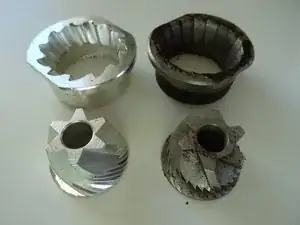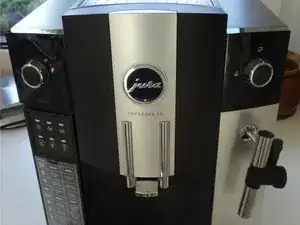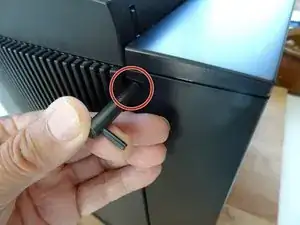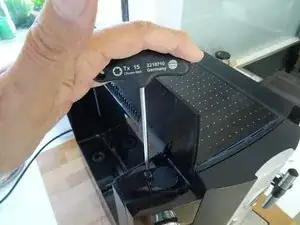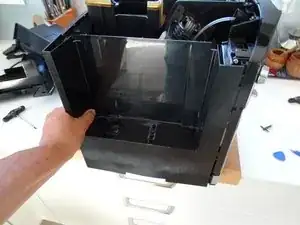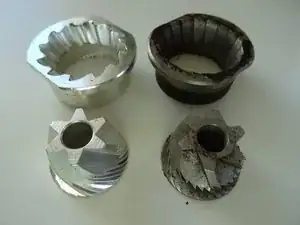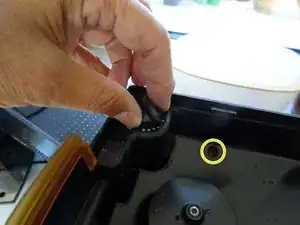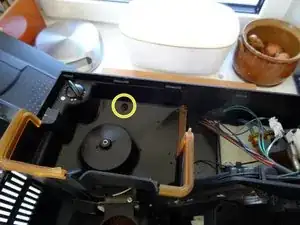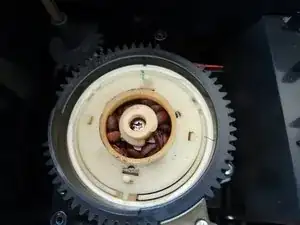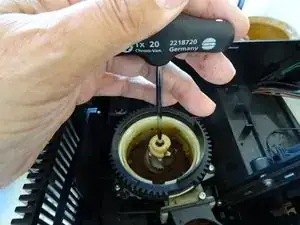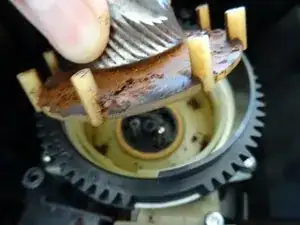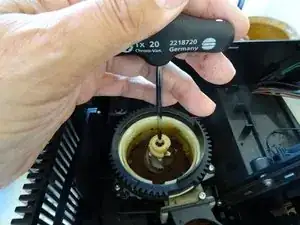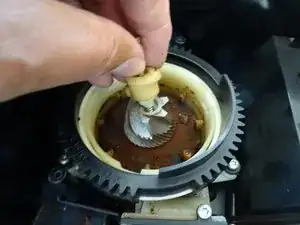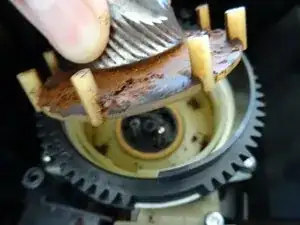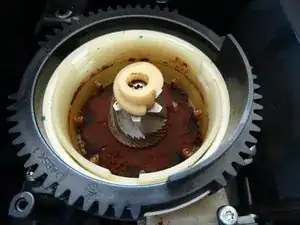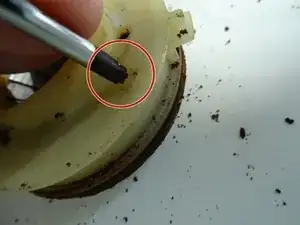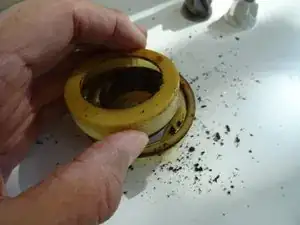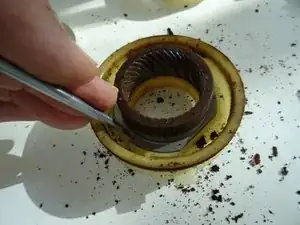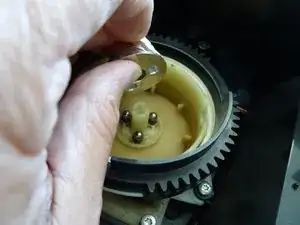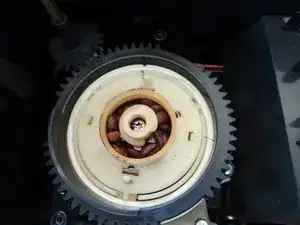Introduction
If the coffee becomes watery, the grindstones may be worn. The grindstones are not sharp enough to grind the coffee cleanly. The instructions apply to many similar models from Jura, AEG, Krups.
Tools
Parts
-
-
The instructions are suitable for nearly every model of Jura and similar ones e.g. AEG and Krups.
-
Remove the water reservoir.
-
-
-
Using an oval head bit you can screw them out. If you haven´t got one you can carefully use pliers. It is a good idea to later change the screws for normal ones.
-
Beneath both top side covers are two Torx T15 screws. Remove those. Now lift off the whole top cover. Sometimes it jams and you have to use a bit of force.
-
The side covers must be pushed backwards by about 1 cm. Sometimes this is a little bit difficult to move. If necessary, wedge a plastic opening tool into the gap between the side covers and the front panel. The rear cover can be easily removed.
-
-
-
The instructions apply to almost all devices from Jura and similar devices from AEG, Krups. The success of the repair is striking!
-
The picture shows the old grind stones on the left and the new ones on the right. They consist of a grinding ring and a grinding cone.
-
For this repair, the side parts do not necessarily have to be removed.
-
-
-
Pull the grinder adjuster up. Note the setting, it is best to take a photo of it.
-
The screws that hold the coffee container are located in two recesses. First clean, then loosen. The protective cover over the grinder does not need to be removed.
-
-
-
Now the grinder is free. Again take a picture, then pull out the axis of the adjuster with moderate force.
-
Depending on the model you will find a silicon sealing on top of the grinder ring, remove it.
-
Watch the fabrication signs , here green. This alignment must be restored later. Now turn the great black gear about 90 degrees counterclockwise. The grinder ring is free and can be lifted off.
-
-
-
The grinding cone is fastened with a long Torx T20 screw. The screw head is often covered with remnants of coffee beans. Expose the head and turn the screw out counterclockwise.
-
Now the bean feeder (the small white snail) can be removed. The grinder cone and drive can now also be lifted up carefully.
-
-
-
The grinder is usually filled with old, sticky coffee grounds. Clean everything carefully for an excellent coffee aroma.
-
Gently lift the felt ring around the drive shaft with a needle, then wipe it clean with a damp cloth. Do not attempt to wash it, as there is a risk that it will swell. When first used, turn it over with the clean side up.
-
Clean the inside of the grinder with a brush and damp cloth, and the blades with a dishwashing brush. Ensure it is properly dried before use.
-
-
-
Push both of the small latches alternately. Then the ring cover should come out.
-
Two clamps hold the grinder ring in its place, push them aside and it should come free.
-
Again clean everything. Press the new ring and cover in its place. With that the grinder ring is exchanged.
-
-
-
First insert the cleaned driver, then the three sleeves, springs and balls. Now fit the grinding cone on the three balls.
-
Then fit the auger, screw in central screws. When screwing in, push the cone downwards and make sure that everything meshes.
-
-
-
Insert grinding ring. The black gear is turned to the right again until the three marks are aligned. Then reinstall the adjuster drive shaft as it was originally.
-
Then install the remaining parts in reverse order.
-
You can set the grinding degree nicely by placing an empty roll of toilet paper perpendicular to the open mill and filling it with a few coffee beans. Plug in the plug (be careful!), choose a cup of coffee and watch as the coffee grounds fall out of the grinder.
-
-
-
These two pictures are no fake: Before repairing the grinder the coffee is thin and transparent. With new stones the coffee is strong and has a fine crema. The repair was a real success!
-
To reassemble your device, follow the above steps in reverse order.
